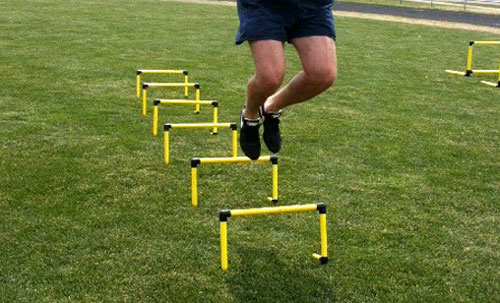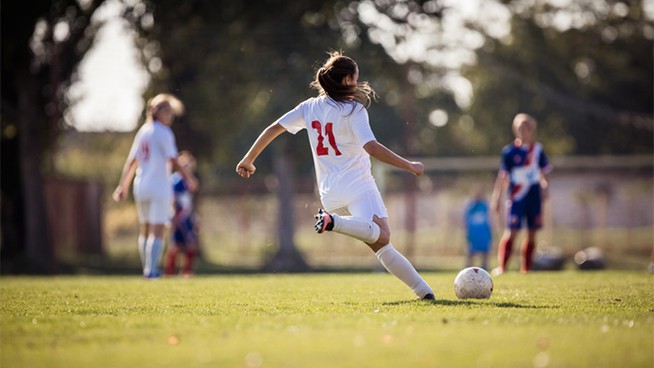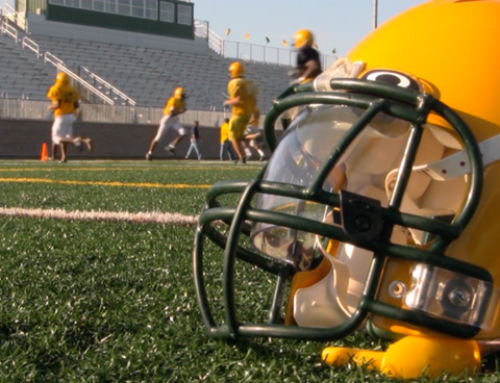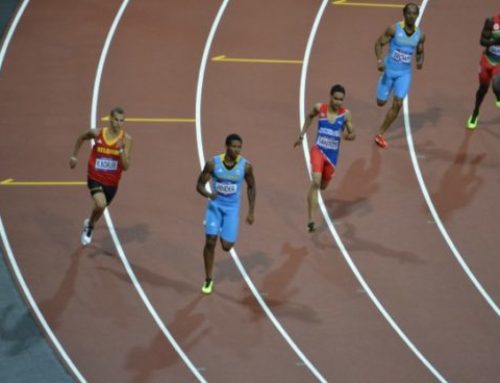Increase Speed With 3 Mini Hurdle Drills
In sports one thing is certain—speed kills. It can help you beat your opponent, win a race to a ball or cross the finish line first. Many different theories expound on improving speed, most centered on improving components of the stride. One method that’s proven effective is performing mini hurdle drills.
Using these small hurdles can improve your stride length and lower body power so you’ll increase acceleration and top speed. Perform the following three drills to reap the benefits of mini hurdle training.
Stride Length Drill
In many situations on the field, you have to go from zero to full speed in a few steps. When you increase your speed, you move your legs faster, but you also try to take longer strides so you can cover ground more quickly. Below is a drill that forces you to increase your stride length.
For this drill, you need four to six mini hurdles. Place the first hurdle about one and a half feet from the start line. Place the second hurdle two feet from the first hurdle (and three and a half feet from the start line). Place the third hurdle two and a half feet from the second hurdle. Repeat this pattern of adding half a foot for any remaining hurdles.
- Assume starting stance with feet staggered and hip-width apart
- Keep back flat, knees slightly flexed and hips pushed back
- Start explosively, driving the rear knee forward while forcefully driving the corresponding arm backward
- Sprint through hurdles, stepping with one foot between each hurdle
- Sprint five to 10 additional yards after last hurdle
To continuously challenge your body, vary the distance between the hurdles on different training days. This drill is normally performed three to five times on your sprinting days, after your warm-up but before your main sprints.
Ankle Hops
Ankle Hops develop strength in your feet and shins, which is important for exerting force against the ground so you can run quickly. For this drill, you need eight to 12 hurdles. Place them in a straight line, separated by a foot or so.
- Stand tall with hands on hips or behind head
- Rise up on toes and hold position
- Using ankles, bounce forward over each hurdle
- Sprint five to 10 additional yards after last hurdle
This drill should be performed three to five times on your sprinting days after your sprints.
Hurdle Hops
Hurdle Hops are a great exercise to show you how to use lower body strength and build explosive speed. For this drill, you need four to six hurdles. Place them in a straight line, separated by three to four feet.
- Assume starting stance with feet staggered hip-width apart
- Keep back flat, knees slightly flexed and hips pushed back
- Swing arms back and lower hips into squat
- Forcefully extend hips, knees and ankles and swing arms forward to jump over hurdle
- Land and repeat jump over next hurdle
- Continue until all hurdles cleared; then sprint five to 10 yards
As you make improvements with this exercise, increase the distance between the hurdles for a greater challenge. This drill should be performed three to five times during your plyometrics workouts or during your sprinting days. If incorporated during sprinting days, perform it after your sprints. If incorporated during your plyometrics workouts, perform it after your warm-up.
What if you don’t have mini hurdles? The mini hurdles serve predominantly as a visual goal, because they actually aren’t tall enough to be challenging as an obstacle. So you can use anything to perform these drills—cones, tennis balls, pencils, string, books, etc. Regardless of what you use, you’ll develop speed with these drills.
Photo: isokineticsinc.com
John M. Cissik is president of Human Performance Services, LLC, which helps professional athletes solve their strength and conditioning problems. He has worked with all levels, produced four videos, written 10 books and more than 70 articles on strength and speed training. For more information, follow him on Twitter (@yourhpservices) or like him on Facebook.
RECOMMENDED FOR YOU
Increase Speed With 3 Mini Hurdle Drills
In sports one thing is certain—speed kills. It can help you beat your opponent, win a race to a ball or cross the finish line first. Many different theories expound on improving speed, most centered on improving components of the stride. One method that’s proven effective is performing mini hurdle drills.
Using these small hurdles can improve your stride length and lower body power so you’ll increase acceleration and top speed. Perform the following three drills to reap the benefits of mini hurdle training.
Stride Length Drill
In many situations on the field, you have to go from zero to full speed in a few steps. When you increase your speed, you move your legs faster, but you also try to take longer strides so you can cover ground more quickly. Below is a drill that forces you to increase your stride length.
For this drill, you need four to six mini hurdles. Place the first hurdle about one and a half feet from the start line. Place the second hurdle two feet from the first hurdle (and three and a half feet from the start line). Place the third hurdle two and a half feet from the second hurdle. Repeat this pattern of adding half a foot for any remaining hurdles.
- Assume starting stance with feet staggered and hip-width apart
- Keep back flat, knees slightly flexed and hips pushed back
- Start explosively, driving the rear knee forward while forcefully driving the corresponding arm backward
- Sprint through hurdles, stepping with one foot between each hurdle
- Sprint five to 10 additional yards after last hurdle
To continuously challenge your body, vary the distance between the hurdles on different training days. This drill is normally performed three to five times on your sprinting days, after your warm-up but before your main sprints.
Ankle Hops
Ankle Hops develop strength in your feet and shins, which is important for exerting force against the ground so you can run quickly. For this drill, you need eight to 12 hurdles. Place them in a straight line, separated by a foot or so.
- Stand tall with hands on hips or behind head
- Rise up on toes and hold position
- Using ankles, bounce forward over each hurdle
- Sprint five to 10 additional yards after last hurdle
This drill should be performed three to five times on your sprinting days after your sprints.
Hurdle Hops
Hurdle Hops are a great exercise to show you how to use lower body strength and build explosive speed. For this drill, you need four to six hurdles. Place them in a straight line, separated by three to four feet.
- Assume starting stance with feet staggered hip-width apart
- Keep back flat, knees slightly flexed and hips pushed back
- Swing arms back and lower hips into squat
- Forcefully extend hips, knees and ankles and swing arms forward to jump over hurdle
- Land and repeat jump over next hurdle
- Continue until all hurdles cleared; then sprint five to 10 yards
As you make improvements with this exercise, increase the distance between the hurdles for a greater challenge. This drill should be performed three to five times during your plyometrics workouts or during your sprinting days. If incorporated during sprinting days, perform it after your sprints. If incorporated during your plyometrics workouts, perform it after your warm-up.
What if you don’t have mini hurdles? The mini hurdles serve predominantly as a visual goal, because they actually aren’t tall enough to be challenging as an obstacle. So you can use anything to perform these drills—cones, tennis balls, pencils, string, books, etc. Regardless of what you use, you’ll develop speed with these drills.
Photo: isokineticsinc.com
John M. Cissik is president of Human Performance Services, LLC, which helps professional athletes solve their strength and conditioning problems. He has worked with all levels, produced four videos, written 10 books and more than 70 articles on strength and speed training. For more information, follow him on Twitter (@yourhpservices) or like him on Facebook.











